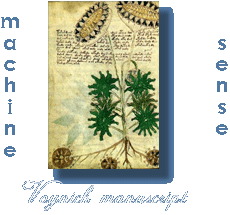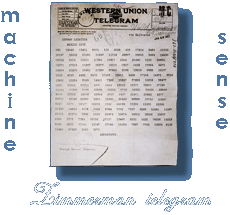|
 |
1901 CE
Major Etienne Bazeries publishes his version of the wheel cipher. |
|
|
|
|
 |
 |
1912 CE
Antiquarian book dealer Wilfrid Voynich finds a strange document amongst a collection of medieval manuscripts in Italy. This document is written in a completely unknown language, and has proven highly resistant to all attempts at decryption. This mysterious document is known today as the Voynich manuscript. |
|
|
|
|
|
 |
1913 CE
Captain Parket Hitt creates a wheel cipher in strip form. |
|
|
|
|
|
 |
|
|
|
|
|
 |
1914 CE
Major Joseph O. Mauborgne publishes the first recorded solution of the Playfair cipher. |
|
|
|
|
|
 |
1915 CE
Germany changes its cipher method to complicated substitution ciphers, using twenty-four possible encryption alphabets, or combinations of them. These ciphers become progressively more complicated. |
|
|
|
|
|
 |
1916 CE
The Allies start using a code book in telephone communication. |
|
|
|
|
 |
 |
1917 CE
British cryptographers break the Zimmerman Telegram |
|
|
|
|
|
 |
1917 CE
Gilbert S Vernam invents a practical polyalphabetic cipher machine capable of using a key which is totally random and never repeats - a one-time-tape. This is the only provably secure cipher. |
|
|
|
|
|
 |
1918 CE
The ADFGVX System begins to be used by the Germans. |
|
|
|
|
|
 |
1918 CE
The United States employs eight American Indians from the Choctaw tribe to relay important messages across insecure communication channels in their native tongue. Since Native American languages are extremely complex and difficult to learn, this allows for simple and effective encryption. |
|
|
|
|
|
 |
|













